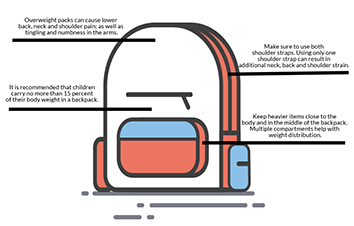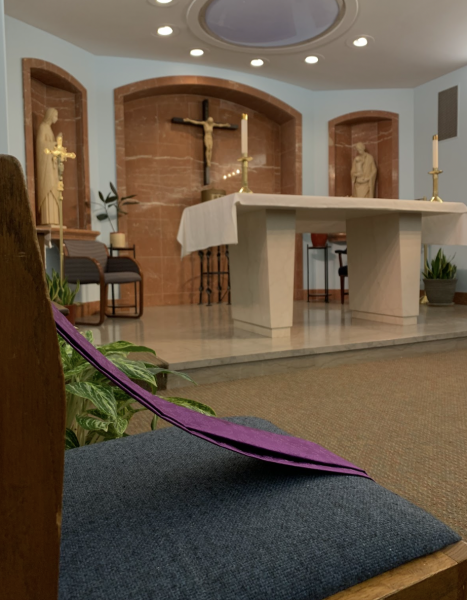Editorial: Backpacks are essential tool for students

Backpacks slump against desks, edges frayed from years of abuse. They have been thrown on the ground, stuffed beyond the company-recommended carrying capacity, and filled with miscellaneous combinations consisting of anything from basketball shoes to unpackaged lunch to overdue library books. Yet our backpacks remain loyal, continuing to dutifully hold these supplies during various modes of transportation.
Despite their years of dedicated service, backpacks exist largely unappreciated. Students take for granted the ability to toss books, clothes and empty candy wrappers into a large, sturdy container. Imagine high school without this blessing.
Bishop Chatard High School does not allow backpacks in classrooms, as they take up too much room within a space already cramped with desks and students. Another reason behind the decision argues that the backpacks provided too easy a means for devices such as iPads to be broken—backpacks can be carelessly thrown, dropped or stepped on with only the dirtied canvas in mind, not the devices worth hundreds of dollars hidden within.
In place of backpacks, Bishop Chatard students either can carry their books in their arms or transport them with a small gray canvas drawstring bag. A pocket closed with a zipper provides additional space, and the Bishop Chatard name and emblem decorate the front in white. At full capacity, the bag might hold a maximum of two textbooks and a small binder, thus necessitating frequent trips to the student’s locker, perhaps even during every passing period.
Mandating students to substitute their backpacks with these 22 by 14 inch strongholds with flimsy cotton sacks suspended by thin, decorative gray ribbon would be a nonsensical request.
We pride ourselves in offering advanced, demanding coursework for our high achieving students. Expecting our students to gather their textbooks, notebooks, binders and folders between each class is not only unrealistic—it is undermining to their daily work.
Drugs, alcohol and other illegal substances are often cited as perpetrators for backpack bans. However, administrators and parents who fall to this argument clearly lack several key pieces of information.
First, illegal substances can be hidden in various places, which do not necessarily take the form of a containment or transportation device. Socks, pant pockets, water bottles and nearly anything have likely been used. If there’s a will, there’s a way.
However, this precaution need not be an issue at our school. Our students attend this institution to learn and to gain from the unique opportunities. Like all teenagers, we have made mistakes. But we learn from these mistakes and keep our school life academically focused.
The archaic argument remains that backpacks are detrimental to students’ physical health. Carrying over 30 pounds of learning material for hours each day is irrefutably harmful. But carrying more than 30 pounds of learning material for hours each day within your arms is dangerous and difficult. A single trip (all the more likely with vision blocked by piles of school work and balance offset with said piles) is made deadly with the addition of loose paper, devices and crowds of shouting students. A sidewalk crack could be the demise of math homework, an English paper, that science project and your dignity.
Ultimately, this debate falls to trust. Do we trust our students to treat their devices properly? Do we trust our students to keep backpacks out of the way during class time? Do we trust our students to refrain from transporting drugs in backpacks? For our student body, the answer is an undeniable yes.
Though our loyal backpacks are often unappreciated, we as students heavily rely on the ability to transport stacks of papers, books and binders without much hassle or struggle. We might fray their edges or rip their zippers, but we, as hard-working, high-achieving high school students, should never be asked to give up our beloved backpacks.





